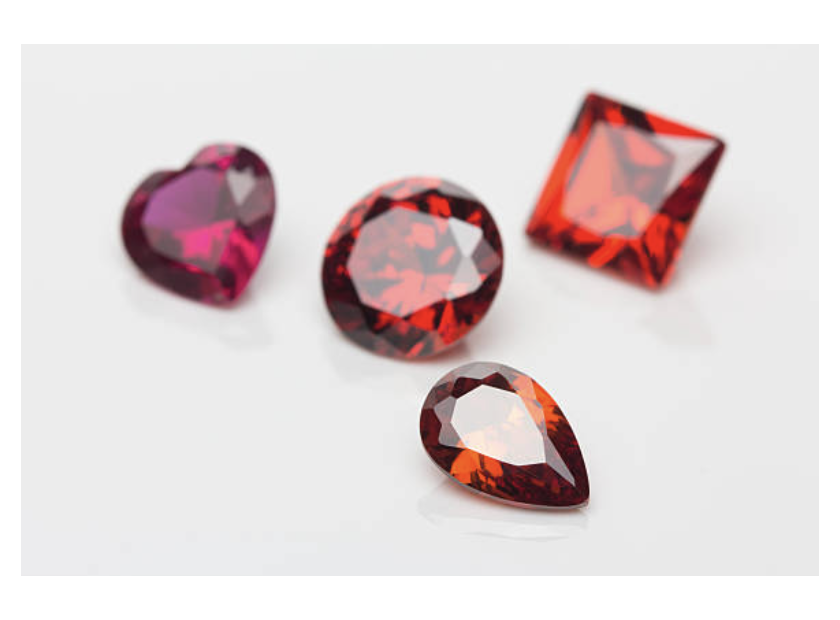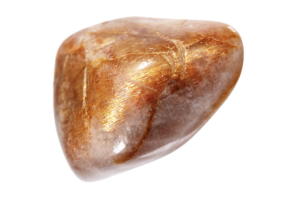USD
/
USD
/
Shipping to:
Currency:
What Is the Difference Between Garnet and Ruby? A Complete Guide for Gemstone Lovers
When it comes to red gemstones, garnet and ruby often steal the spotlight.
At a glance, they might seem quite similar, but look a little closer and you'll find they’re quite different in a number of ways.
Whether you're a jewelry enthusiast, a potential buyer, or simply curious, understanding these differences can be both fascinating and helpful.
Garnet and Ruby: A Brief Overview
Garnet isn’t a single mineral but a group of silicate minerals that have been used since the Bronze Age as gemstones and abrasives.
While they’re commonly recognized for their deep red shades, garnets actually come in a rainbow of colors—including green, orange, and even colorless varieties.
Ruby, on the other hand, is a variety of the mineral corundum.
Its iconic red hue is due to the presence of chromium.
Unlike garnet, ruby's color range is more limited and strictly stays within red tones.
Distinguishing Between Garnet and Ruby
Color Variations
While both stones can appear red, the shades are noticeably different:
- Garnet: Typically has a darker, wine-red or brownish-red color. Some garnets may even show hints of orange or purple.
- Ruby: Usually features a vivid, bright red—often described as “pigeon blood” red. High-quality rubies are rich, vibrant, and sometimes show a bluish undertone.
Chemical Composition and Structure
The internal makeup of these stones is quite different:
- Garnet: A group of silicate minerals with different chemical compositions, which is why garnets come in various types and colors.
- Ruby: Made of aluminum oxide with chromium impurities, giving it that signature red color.
Hardness and Durability
Durability matters—especially for everyday jewelry like rings:
- Garnet: Ranks between 6.5 and 7.5 on the Mohs scale. It's strong, but more prone to scratching than ruby.
- Ruby: Has a hardness of 9 on the Mohs scale. That makes it one of the hardest gemstones, second only to diamond—ideal for daily wear.
Light Refraction and Optical Properties
How a gemstone interacts with light affects its brilliance and sparkle:
- Garnet: Usually singly refractive, which results in a softer glow. It lacks the strong "fire" seen in some other gems.
- Ruby: Often shows strong fluorescence, especially under UV light. This can give rubies a distinctive, glowing appearance.
Geographic Origins
Where a stone comes from can influence both its look and value:
- Garnet: Found in locations all over the world, including the U.S., Russia, India, and various parts of Africa.
- Ruby: Sourced primarily from Myanmar (Burma), Sri Lanka, Thailand, and Mozambique. Burmese rubies are especially prized.
Market Value and Rarity
As you might expect, value often reflects rarity:
- Garnet: More abundant and generally more affordable. Its accessibility makes it a popular choice in many types of jewelry.
- Ruby: Much rarer, particularly in larger sizes or finer quality. Top-tier rubies can even be more valuable than diamonds of the same size.
Uses in Jewelry and Symbolism
Both gems are deeply rooted in history and symbolism:
- Garnet: January’s birthstone, associated with protection, strength, and love. It’s often seen in vintage and antique jewelry pieces.
- Ruby: The birthstone for July, symbolizing passion, love, and energy. Its bold hue makes it a standout in fine and bridal jewelry.
If you're after something different, check out non-traditional engagement rings featuring colorful gemstones like ruby.
Identifying Garnet from Ruby
Here’s how to spot the difference between the two:
- Visual Clues: Rubies often show inclusions under magnification, while garnets usually appear clearer.
- Light Test: Rubies often fluoresce under UV light, while garnets don’t.
- Professional Testing: A gemologist can confirm whether a stone is ruby or garnet using tools like a refractometer or microscope.
Choosing Between Garnet and Ruby
Choosing the right stone depends on your budget, lifestyle, and personal taste:
- Budget: Garnet is more wallet-friendly while still offering beauty and variety.
- Durability: Ruby is better for rings or items you'll wear daily, thanks to its superior hardness.
- Style: Want something eye-catching and symbolic? Consider ruby. Looking for subtle elegance? Garnet may be your match.
Explore our collection of gemstone engagement rings to find a piece that fits your look and lifestyle.
Or check out gemstone rings for unique designs featuring both garnets and rubies.
FAQs About Garnet and Ruby
Can garnet be mistaken for ruby?
Yes, because both can appear red, they’re sometimes confused. However, careful inspection and professional tools can usually tell them apart.
Is garnet a “poor man’s ruby”?
That phrase is outdated. Garnet is a beautiful gemstone with its own charm and historical value. It’s not a “lesser” version of ruby—it’s simply different.
How should I care for garnet and ruby jewelry?
Clean with warm soapy water and a soft brush. Avoid harsh chemicals and extreme heat. Store separately to avoid scratches—especially since ruby is harder than garnet.
Are there synthetic versions of these gemstones?
Synthetic rubies are common and often used in affordable jewelry. Garnets are rarely synthesized, mostly because they’re already so widely available in nature.
Want to know more about the science behind gems? Take a look at how gemstones and diamonds are formed or how to choose between lab-grown diamonds and gemstones.








